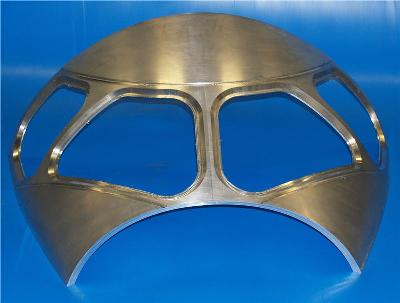3D-Metal Forming has successfully demonstrated that it can produce intricate aircraft components like the cockpit fuselage using its explosive forming technology during a research and development project for Airbus.
 Prototype component of an Airbus fuselage produced by explosive forming technology. Credit: 3D-Metal Forming BV
Prototype component of an Airbus fuselage produced by explosive forming technology. Credit: 3D-Metal Forming BV
The explosive forming technology was originally developed by 3D-Metal Forming for the production of components for the construction of the fusion reactor ITER in South France. Several industrial partners are now showing an interest in this technology. 3D-Metal Forming and Airbus are now exploring a follow-up order.
The development of huge science projects such as ITER offers exciting opportunities for advancement and has several contracts for specialized firms such as 3D-Metal Forming. A fusion reactor has the form of a vacuum vessel and an empty inner tube. It has numerous curved components that are complex to manufacture utilizing a press or a punch.
3D-Metal Forming utilizes shockwaves to press metal plates having a thickness of up to 6 cm into every possible form. This technology eliminates the problems of weakening and hairline fractures of materials.
Hugo Groeneveld, Director at 3D-Metal Forming stated that during the process, the metal plates are set on top of a mold placed in a tank of water. The explosives are then accurately detonated to generate shockwaves in the water, which in turn press the metal plates into every possible shape, he said. This technology can be used for the production of difficult metal forms, he added.